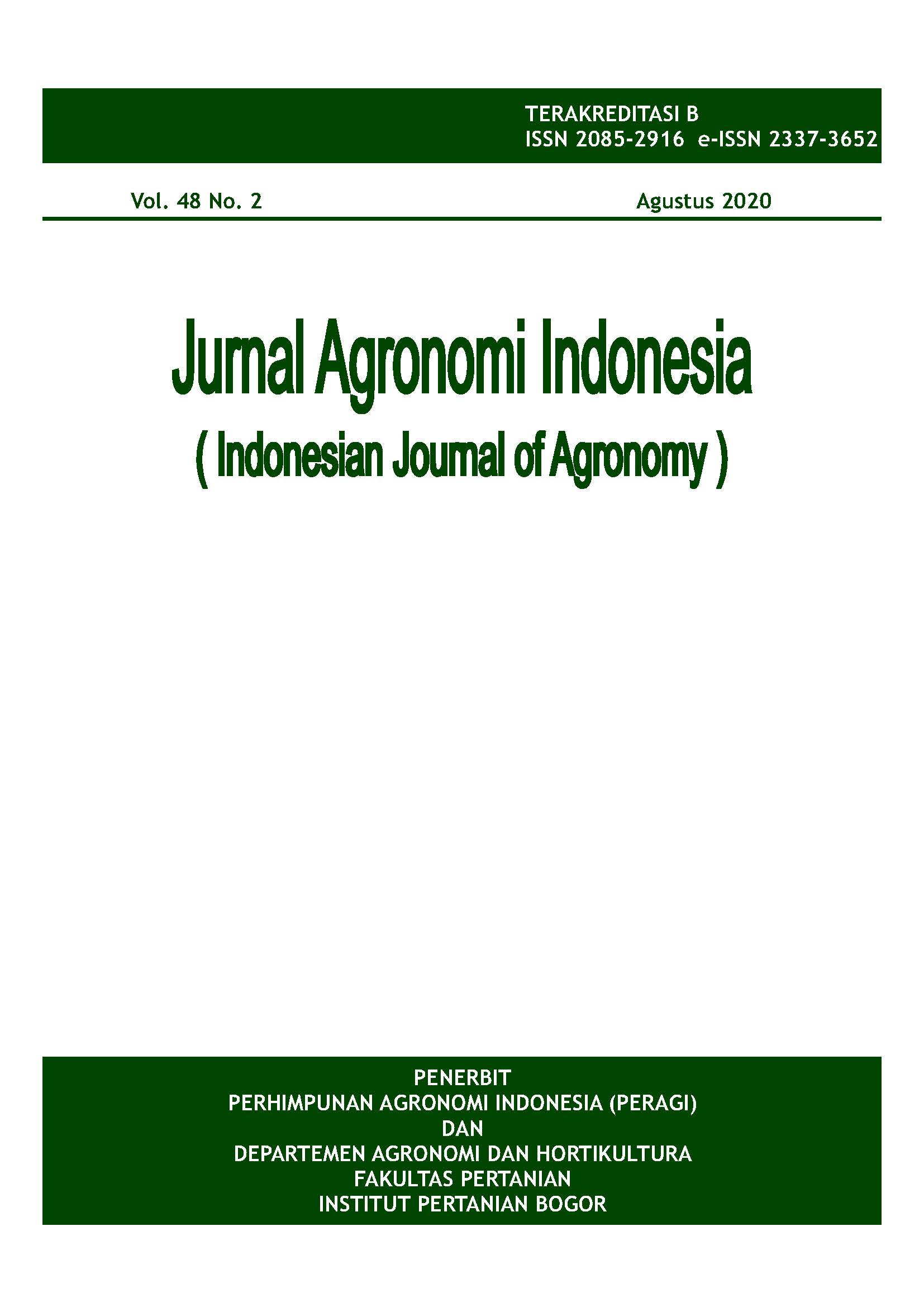Kombinasi Pupuk Organik dan Anorganik untuk Optimalisasi Produksi dan Kandungan Nutrisi Umbi Taka
Abstract
Tacca (Tacca leontopetaloides [L.] Kuntze) is a herbaceous plant that grows wild in coastal areas with sandy soil texture. Tacca tuber has a fairly high nutritional content, mainly carbohydrates. At present, the utilization of tacca tuber is limited due to low availability. This research aimed to obtain the fertilizer combination to enhance yield and nutrient content of tacca tuber. The research was carried out in the field using a randomized block design consisting of 6 treatments, namely without fertilizer as a control, manure only (PK), manure combined with inorganic NPK 50% (PKA50), manure combined with NPK 100% (PKA100), manure combined with biofertilizer and NPK 50% (PKHA50), and manure combined with biofertilizer and NPK 100% (PKHA100). The 100% NPK dose is 150: 50: 150 kg ha-1. Biofertilizer used was Beyonic StarTmik with a dose of 25 cc L-1 of water for seedlings soaking, 250 mL for each plant at the age of 1 and 3 months after planting. All those treatments were replicated 5 times. The results showed that the highest yield of tacca tuber was obtained from PKHA50 treatment. Biofertilizer combined with inorganic fertilizer could increase tacca tuber production by 60-100%, but did not affect the nutritional content. The combination of manure, biofertilizer, and NPK 50% can be recommended to optimize tacca tuber production.
Keywords: biofertilizer, manure, NPK, yield














